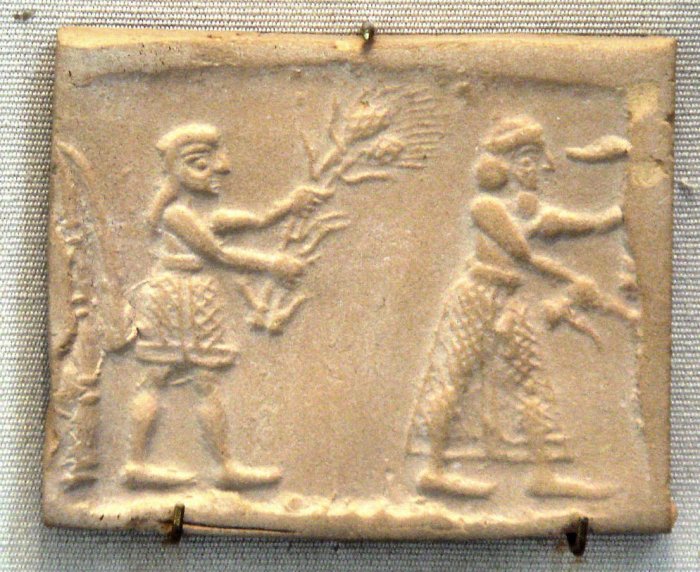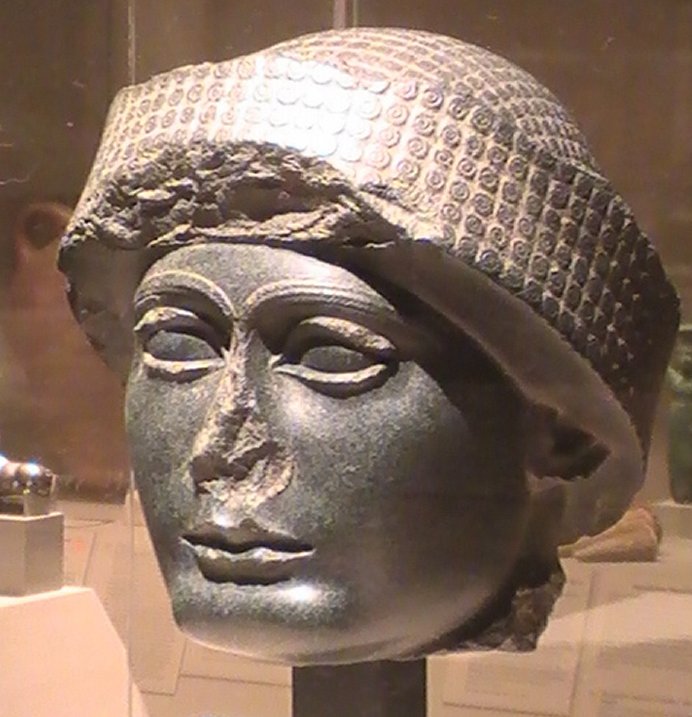Who Was The Sumerian Ensi?
A. Sutherland - AncientPages.com - Assyriologists have identified around twenty central provinces, and much we know today about Sumer originates from archives related to the sites of Girsu (Tello), Umma, Ur, Nippur, and Puzriš-Dagan (Drehem, a suburb of Nippur).
Sumerian cylinder seal impression dating to c. 3200 BC, showing an ensi and his acolyte feeding a sacred herd. Image credit: PHGCOM - CC BY-SA 4.0
Especially the collections from Umma and Girsu-Lagash are practically the only surviving provincial archives from the times of the Third Dynasty from Ur, which can serve as the basis for the study of local power structures, including the position of ensi.
A two-headed power controlled these provinces: one of them was a civil governor, ensi, who directed the administration and the sector of the temples and represented the highest judicial authority of the province.
The other was a post of the military governor (sagina) of Ur, a position which may have been a promising starting point for a career. The sagina reported directly to the authority of the king or the grand vizier. It was, therefore, independent of ensi.
However, the functioning of the empire's peripheries is less well known.
Ensi Managed The Community In Time Of Peace And War
The titles of king-priest en and king-commander of Lugal were adopted by the rulers of the main Sumerian cities, which ruled over larger, loosely integrated organizational territories.
In the Old Sumerian Period, divided into the Pre-dynastic Period (3000 BC to 2800 BC) and Early Dynastic Period (2800 BC to 2340 BC), the term ensi was one of the titles of independent Sumerian city-rulers. They held most political power in Sumerian city-states during the Uruk period (c.4100-2900 BC).
The ensi title meant "head of agricultural work" and originally referred to the coupling manager belonging to the commune. However, since the donkeys that were harnessed to the plow also pulled carts going to war, ensi could, therefore, also manage the community during the war or some important public tasks.
Head of Gudea in polished diorite, reign of Gudea (Boston Museum of Fine Arts). Image credit: Kkhemet - CC BY-SA 4.0
The title describing the city's independent ruler was widespread only in the 3rd millennium BC. At the end of this millennium, during the reign of the 3rd dynasty of Ur, ensi was exclusively the province administrator, who was on behalf of King Ur.
In the later Sumerian period, an ensí was subordinate to a lugal. Nevertheless, even the powerful rulers of the Second Dynasty of Lagash (c. 2100 BCE), such as Gudea were satisfied with the title 'ensí.'
Gudea - the King-Priest of the Sumerian city of Lagash, located in southeast Mesopotamia - was one of them. He possessed significant influence in Sumer during his 20-year-long reign. He chose the title of ensi (town-king or governor), instead of the title 'lugal.'
From the Old Akkadian period (the time of Sargon the Great), the term 'ensi' meant only a province governor subordinate to the king. In later eras, it retained the same meaning, including the Babylonian state.
In the city-state of Ashur, the hereditary ruler bore the Akkadian language version of the title ensí, while the patron deity was regarded as (šarrum - the Akkadian for "king."
Ensi – A Dignity Of Sumerian Temple
The highest dignity of the Sumerian temple city was the 'Ensi.' Originally, ensi probably meant a high priest whose powers included supervision over the construction of the temple.
He was also a worldly ruler, chief priest, chief military officer, and prominent, the earthly representation of the city god. He had full legislative, military, administrative, and judicial power on his territory.
If the local prince was able to bring under domination other city-states as well, he became 'lugal' (or 'great man/ruler') because his supremacy began to encompass a more extensive territory; he was called 'lugal,' translated as "great man." He ruled on behalf of the local god and headed the priests forming the ruling elite. If a "center of power" comprised several cities, the leading city prince (or "ensi") was responsible for the title "Lugal."
Ensi was considered chosen by the gods and possessed absolute power; however, it was more of an "absolutist system" than a system based on religious values. When the city prince lost the favor of the various gods - symbolized by catastrophes including incursions by enemies, illnesses, and natural events), he was quickly replaced by another "chosen one," who was probably recruited from the "Assembly of Elders."
A woman could not obtain this title but still hold a high position within the temple. In this respect, the Sumerians were somewhat progressive people. Each Sumerian city had a temple dedicated to its guardian deity and would either be governed by an ensi or a lugal.
Written by – A. Sutherland - AncientPages.com Senior Staff Writer
Updated on March 4, 2023
Copyright © AncientPages.com All rights reserved. This material may not be published, broadcast, rewritten or redistributed in whole or part without the express written permission of AncientPages.com
Expand for referencesReferences:
Samuel Noah Kramer, History Begins at Sumer
Gary A.Thomson, First Writers - The Sumerians: They Wrote on Clay
More From Ancient Pages
-
 Garamantes: 3,000-Year-Old Sophisticated North African Society Built 3,000-Mile Network Of Underground Irrigation Canals
Featured Stories | Jan 29, 2022
Garamantes: 3,000-Year-Old Sophisticated North African Society Built 3,000-Mile Network Of Underground Irrigation Canals
Featured Stories | Jan 29, 2022 -
 On This Day In History: ‘Sue’ Largest Tyrannosaurus Rex Skeleton Discovered In South Dakota – On August 12, 1990
News | Aug 12, 2016
On This Day In History: ‘Sue’ Largest Tyrannosaurus Rex Skeleton Discovered In South Dakota – On August 12, 1990
News | Aug 12, 2016 -
 New Dating Of Intriguing Cave Art Reveals History Of Puerto Rican People
Archaeology | Oct 19, 2023
New Dating Of Intriguing Cave Art Reveals History Of Puerto Rican People
Archaeology | Oct 19, 2023 -
 Mysterious Chachapoyas ‘Warriors Of The Clouds’ And Their Impressive Structures
Civilizations | Nov 4, 2020
Mysterious Chachapoyas ‘Warriors Of The Clouds’ And Their Impressive Structures
Civilizations | Nov 4, 2020 -
 Biblical Mystery Of The Forbidden Fruit And The ‘Deep Sleep’
Ancient Mysteries | Feb 13, 2022
Biblical Mystery Of The Forbidden Fruit And The ‘Deep Sleep’
Ancient Mysteries | Feb 13, 2022 -
 Fantastic Discovery At Hadrian’s Wall Reported By Archaeologists
Archaeology | Sep 10, 2022
Fantastic Discovery At Hadrian’s Wall Reported By Archaeologists
Archaeology | Sep 10, 2022 -
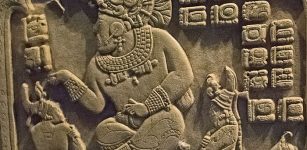 Fall Of The Ancient Maya Civilization Not Caused By Climate Change And Environmental Degradation – Scientists Say
Archaeology | Nov 18, 2021
Fall Of The Ancient Maya Civilization Not Caused By Climate Change And Environmental Degradation – Scientists Say
Archaeology | Nov 18, 2021 -
 Tracing Footsteps Of Giants In Africa – Obscure Past Of Mzoura Stones
Civilizations | Oct 18, 2015
Tracing Footsteps Of Giants In Africa – Obscure Past Of Mzoura Stones
Civilizations | Oct 18, 2015 -
 Echidna – Mother Of All Monsters – A Cave-Dwelling Female Hybrid Creature In Greek Mythology
Featured Stories | Jan 13, 2022
Echidna – Mother Of All Monsters – A Cave-Dwelling Female Hybrid Creature In Greek Mythology
Featured Stories | Jan 13, 2022 -
 Ancient Solar Eclipses That Re-Wrote History And Made Ever-Lasting Impact On Humans
Featured Stories | Aug 15, 2017
Ancient Solar Eclipses That Re-Wrote History And Made Ever-Lasting Impact On Humans
Featured Stories | Aug 15, 2017 -
 Legendary ‘Orichalcum Metal’ Related To Atlantis Found In 2,600-Year-Old Shipwreck
Archaeology | Mar 3, 2017
Legendary ‘Orichalcum Metal’ Related To Atlantis Found In 2,600-Year-Old Shipwreck
Archaeology | Mar 3, 2017 -
 Neanderthals Died Out 40,000 Years Ago, But There Has Never Been More Of Their DNA On Earth
Archaeology | Sep 6, 2022
Neanderthals Died Out 40,000 Years Ago, But There Has Never Been More Of Their DNA On Earth
Archaeology | Sep 6, 2022 -
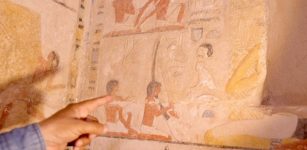 Largest And Most Complete Ancient Egyptian Workshops Found In Saqqara
Archaeology | May 28, 2023
Largest And Most Complete Ancient Egyptian Workshops Found In Saqqara
Archaeology | May 28, 2023 -
 Neanderthals’ Lack Of Drawing Ability Could Explain Why Modern Humans Became Smarter
Archaeology | Feb 11, 2018
Neanderthals’ Lack Of Drawing Ability Could Explain Why Modern Humans Became Smarter
Archaeology | Feb 11, 2018 -
 Was Pocahontas A Real Historical Person?
Featured Stories | Feb 20, 2019
Was Pocahontas A Real Historical Person?
Featured Stories | Feb 20, 2019 -
 On This Day In History: Treaty Of Paris Was Ratified – On January 14, 1784
News | Jan 14, 2017
On This Day In History: Treaty Of Paris Was Ratified – On January 14, 1784
News | Jan 14, 2017 -
 Advanced Ancient Technology: Could Ancient Peruvians Soften Stone?
Ancient Technology | May 7, 2015
Advanced Ancient Technology: Could Ancient Peruvians Soften Stone?
Ancient Technology | May 7, 2015 -
 Ancient Ritual Bundle From Bolivia Reveals Multiple Psychotropic Plants
Archaeology | May 7, 2019
Ancient Ritual Bundle From Bolivia Reveals Multiple Psychotropic Plants
Archaeology | May 7, 2019 -
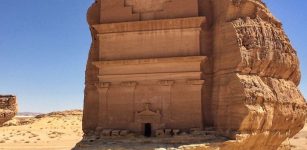 Mada’in Saleh: Magnificent Timeless Rock-Cut Tombs And Monuments In The Desert
Civilizations | Oct 30, 2018
Mada’in Saleh: Magnificent Timeless Rock-Cut Tombs And Monuments In The Desert
Civilizations | Oct 30, 2018 -
 Unusual Object With Crosses And Enigmatic Runes Discovered In Sweden
Archaeology | May 16, 2018
Unusual Object With Crosses And Enigmatic Runes Discovered In Sweden
Archaeology | May 16, 2018

